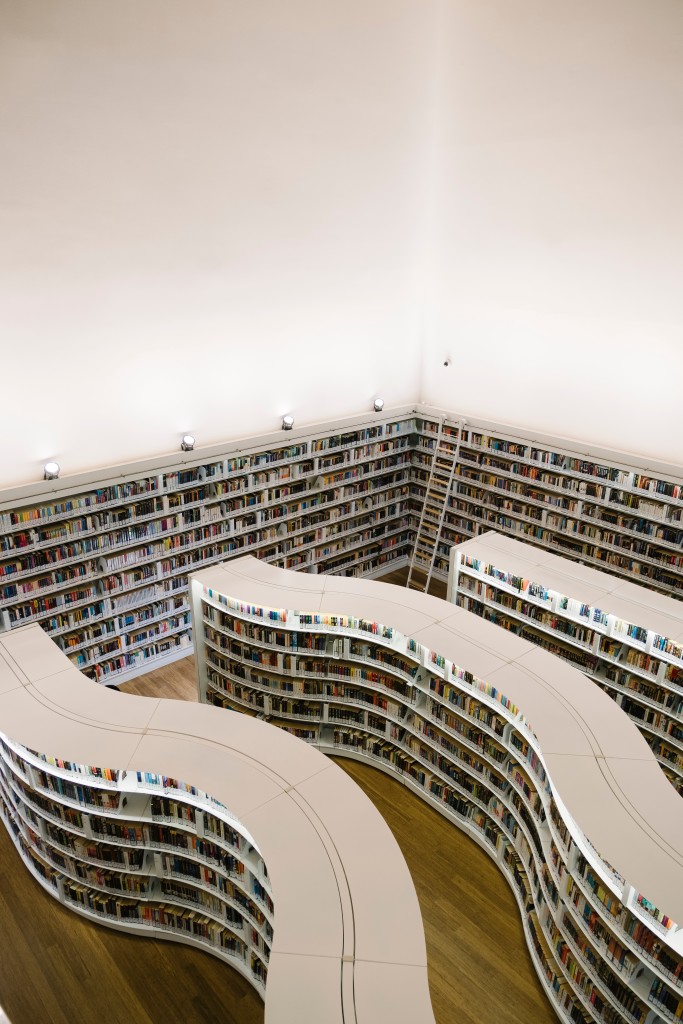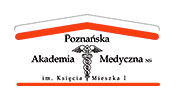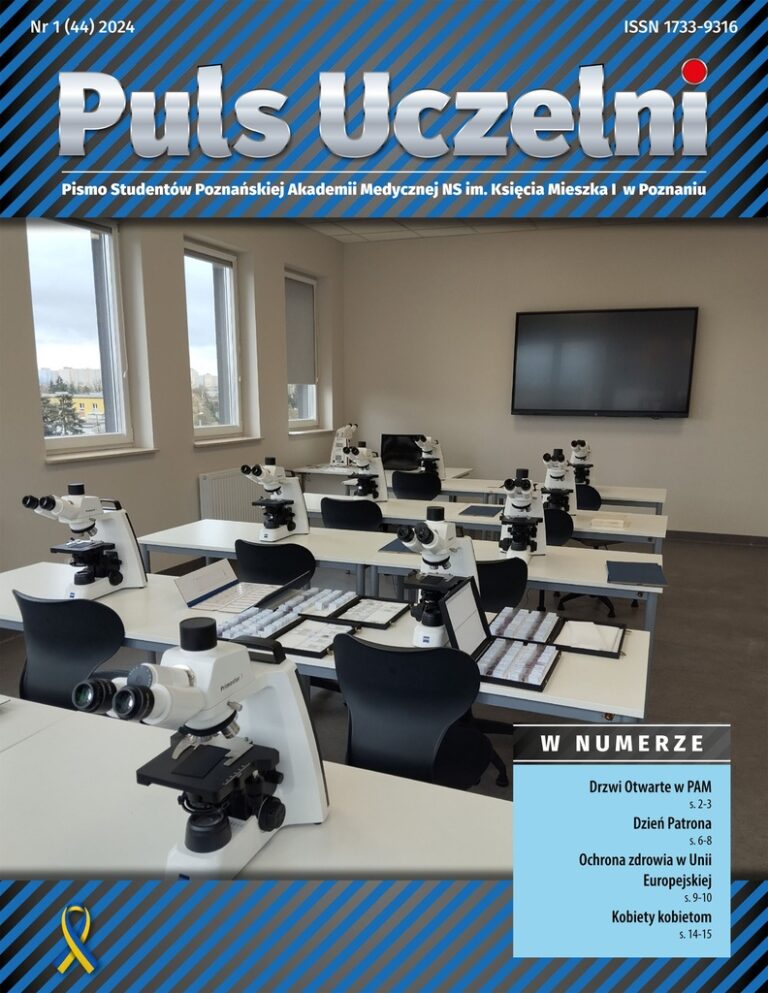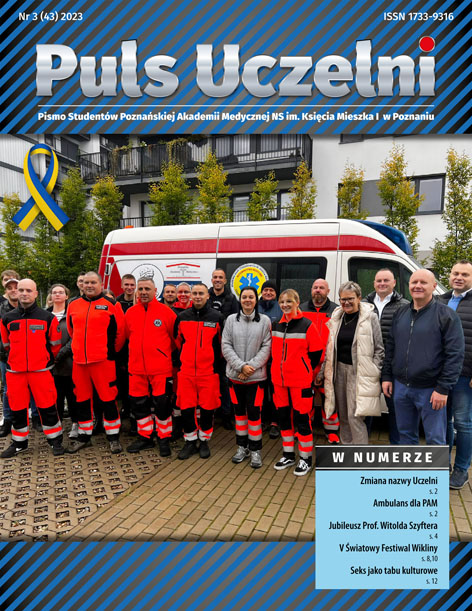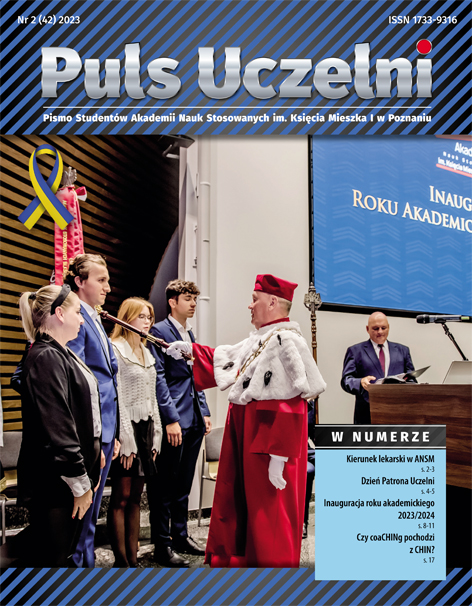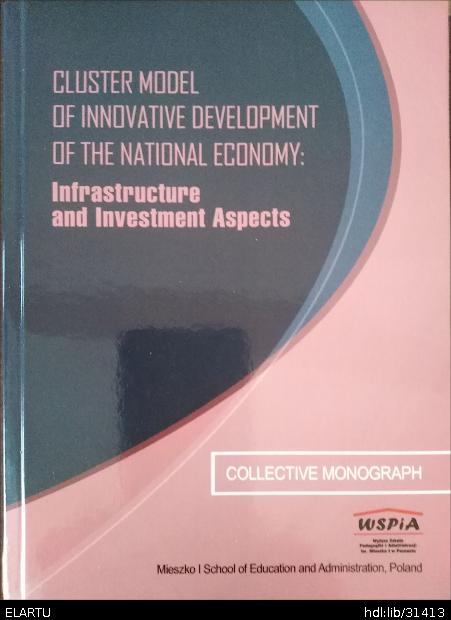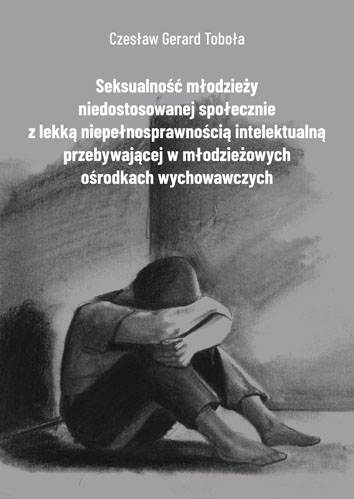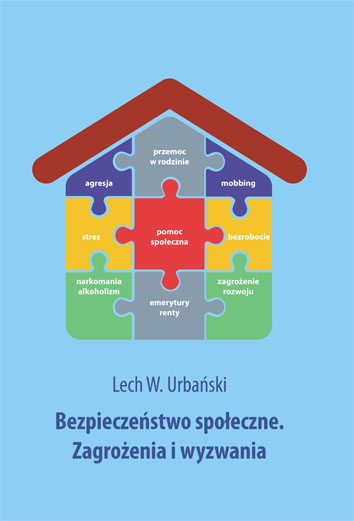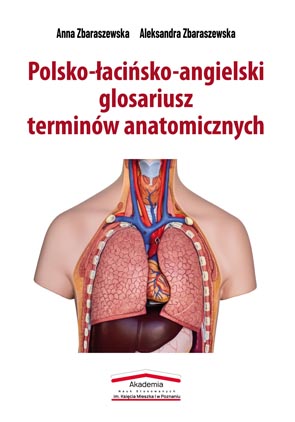Magazine
Pulse of the University
The magazine was established in 2004. It publishes news about the University, texts prepared by students, interviews with students and graduates of our University, as well as information useful during studies. We encourage the publication of texts. If you are interested, please contact us at wydawnictwo@pam.poznan.pl
Publish with Puls Uczelni
Publish your article in the magazine “Puls Uczelni” and share your knowledge with a wide range of readers! Our magazine is an excellent platform for presenting research results, analysis and opinions on a variety of topics. We provide professional review, editorial support and wide distribution, which will increase the visibility of your work and strengthen your scientific achievements. Join the authors of “Puls Uczelni” and shape the future of science!
When you publish with us, you become part of a dynamic academic community that strives for continuous development and broadening of scientific horizons.
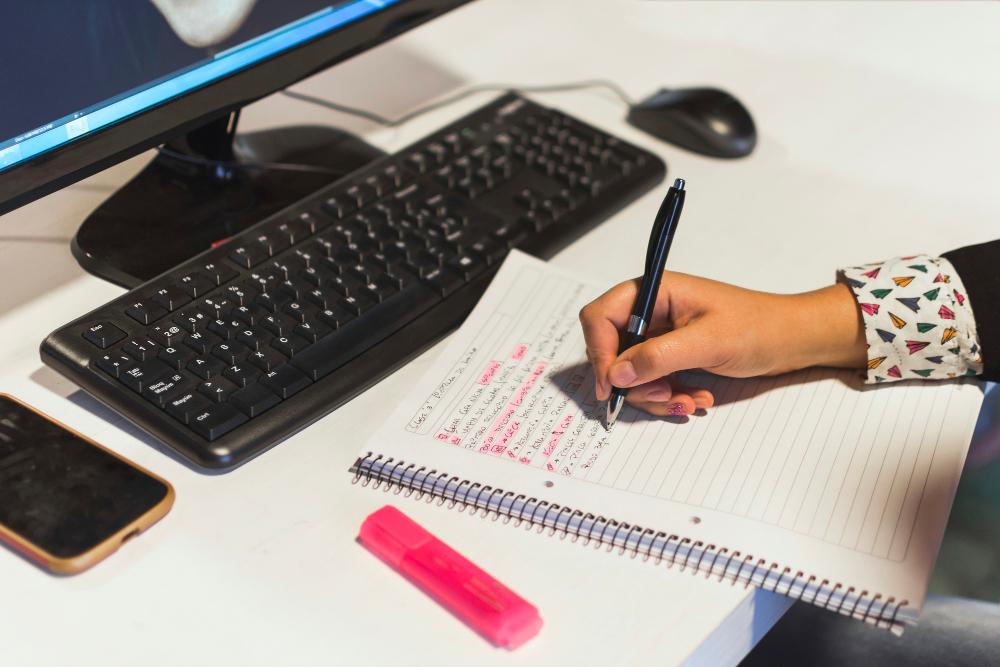
Publisher
PAM Publishing Services
With the commencement of activities in 2004 by the Mieszko I University of Pedagogy and Administration in Poznan (now Poznan Medical University – PAM), a Scientific Publishing House was also established. It aims to publish the scientific and didactic achievements of PAM researchers and other Polish and foreign academics who are willing to cooperate.
Editorial
Arcu aliquam ullamcorper in sed sit. Leo egestas purus consectetur lacus in lacus adipiscing.
Graphic designs
Preparation of graphic designs (including cover designs, posters, invitations, business cards, holiday cards)
Typesetting and printing
Computer typesetting, printing of books, textbooks, scripts
Publication
PAM is engaged in publishing scientific publications in the humanities, social sciences, medical sciences
Books published by PAM
We present books published by and with the help of the Poznan Medical University.
The most important information about the publishing house
PAM Publishing House Guide
Publisher Ethics
The Poznań Medical Academy Publishing House always applies the highest publishing standards and is also guided by the generally accepted principles of publishing ethics, aimed at firmly counteracting prohibited publication practices. In terms of publication ethics and scientific integrity, it is guided by the guidelines of the Committee on Publication Ethics (COPE), and the review procedure is based on the indications of the Ministry of Science and Higher Education.
Publications submitted to the publishing house will first be verified in terms of generally accepted principles of publishing ethics in accordance with available knowledge using available tools.
The responsibilities of the PUBLISHER include:
- compliance with generally applicable publishing standards and principles of publishing ethics and preventing practices that are inconsistent with adopted standards,
- compliance with generally applicable publishing standards and principles of publishing ethics and preventing practices that are inconsistent with adopted standards,
- maintaining publishing secrecy, i.e. not disclosing information about reported publications to unauthorized persons,
- counteracting conflicts of interest of authors, editors and translators.
The responsibilities of the SCIENTIFIC EDITOR include:
- deciding which materials will be published. The basic criteria for accepting texts should be: the scientific value of the work, the originality of the approach to the topic and the clarity of the argument.
- ensuring the scientific integrity of published works. In the event of suspicions of unfair practices (especially plagiarism, falsification of research results), the scientific editor should withdraw the text from the collective publication.
- ensuring that the co-authors of a collective work accept the corrections resulting from the scientific editing.
The PUBLISHER and SCIENTIFIC EDITOR have the right to withdraw a publication after its publication if:
- there is evidence that the research results are unreliable and/or data are falsified, or if unintentional errors are made (e.g. methodological errors, calculation errors);
- the work shows signs of plagiarism or violates the principles of publishing ethics.
The AUTHOR’s responsibilities include:
- ensuring the reliability and originality of the research results presented in the publication,
- enabling the identification of sources cited in the research work,
- providing access to the data presented in the work even after the text has been published,
- obtaining the rights to include all third party rights in the publication, including illustrations, tables, graphs, quotes, etc.
- in the case of multi-author publications, disclosing the contribution of individual authors to their creation and counteracting cases of scientific dishonesty,
- attaching a bibliography to the work, including the publications that were used by him in the text, immediate correction of all substantive errors in the text, indicated by the editor at any stage of the publishing process or discovered by the author after the publication of the work.
The responsibilities of the REVIEWER include:
- ensuring that there is no conflict of interest between him and the AUTHOR of the reviewed publication.
- timely completion of the commissioned review. The reviewer is obliged to immediately notify the publisher of any difficulties in meeting the deadline,
- confidentiality. The reviewer may not disclose the reviewed work to persons who are not involved in the publishing process.
- objective evaluation of the submitted work supported by appropriate arguments.
- immediate reporting to the PUBLISHER of text fragments suspected of scientific dishonesty and indication of similarity to other works bearing signs of plagiarism.
The responsibilities of a TRANSLATOR include:
- using the knowledge and skills available to him in order to ensure the highest quality of translation,
- timely execution of the order. The translator is obliged to immediately notify the PUBLISHER about any difficulties in meeting the deadline,
- in the case of translating a subsequent edition of a publication, ensuring that there has been no plagiarism of an existing translation.
- ensuring that the translation does not infringe the rights of third parties to the materials contained in the text.
The Publishing House makes every effort to counteract unacceptable publishing practices, with particular emphasis on:
- duplicate publication,
- plagiarism,
- fabrication of data,
- by ghost author,
- by guest author.
Publishing procedure
The Poznań Medical Academy Publishing House always applies the highest publishing standards and is also guided by the generally accepted principles of publishing ethics, aimed at firmly counteracting prohibited publication practices. In terms of publication ethics and scientific integrity, it is guided by the guidelines of the Committee on Publication Ethics (COPE), and the review procedure is based on the indications of the Ministry of Science and Higher Education. Authors interested in publishing a publication in the PAM Scientific Publishing House are kindly requested to familiarize themselves with the rules of cooperation between the Author and the Publishing House. The application, after careful completion, should be submitted to the Publishing House and sent in a Word document to the address wydawnictwo@pam.poznan.pl
Rules of cooperation between the Author and the Publisher and technical guidelines for authors who intend to publish their works in the PAM Scientific Publishing House
I. General principles of cooperation with the Author
An essential step that an Author interested in publishing their work must take is to submit a publishing application to the Publisher or in a publishing application – it can be obtained at the Publisher’s office, on the Publisher’s website or by e-mail. In the case of multi-author monographs, the person who should fill out such an application and contact the Publisher on issues concerning the book is the Scientific Editor. The publication is placed in the publishing plan after the University Authorities approve the publishing application and the Author (or Editor) delivers a complete set of materials (or sets a deadline for their submission). After work on the book begins, detailed issues concerning it will be discussed at individual meetings. Studies published by the publishing house are subject to mandatory scientific review. The waiting time for a publication to be released is approximately half a year (it may change depending on the content of the publishing plan).
II. What should be provided to the Publisher before editorial work begins?
The final and complete version of the work should be submitted in the form of:
- double-sided computer printout
- and an electronic version in accordance with the printout on an electronic medium (CD or flash drive with the name, title and date marked)
- Arrangement of materials in a work submitted for publication:
- title page (author, title, and possibly scientific editor in a collective work or scientific journal)
- editorial page (editorial committee of the journal)
- table of contents (also including all supplementary materials, including abstracts and indexes)
- list of abbreviations
- introduction/preface
- main text with footnotes (and illustrative materials, with their exact location in the text if they have not been previously incorporated into the appropriate places)
- annex
- footnotes and bibliography (bibliographic descriptions should be given in a uniform form and the chosen notation should be used consistently; see the appendix with sample footnotes and bibliography entries)
- glossary of terms
- indexes (if the Publisher is to prepare them, the Author will provide all necessary substantive assistance)
- list of illustrations, tables, etc.
- summary (in English and/or Polish)
III. Technical guidelines for preparing materials for the Publishing House
- Requirements for the electronic version of the text and computer printout:
- the entire work in one file (the file name should include the name of the author/editor and the title of the work)
- illustrative material (photos, graphs, diagrams, tables) placed in appropriate places in the main text and additionally in separate files
- all titles and subtitles in bold on separate lines
- footnotes with superscript links (entered automatically using the appropriate Word function)
- in the case of multi-author or collective works, all texts are unified into one version of Word
- unified and continuous page numbering; in collective works, continuous numbering is allowed on the printout in handwriting text files in rtf or doc format (Word 2010 or higher, also special fonts)
- 12-point Times New Roman font, 1.5 line spacing, 2.5 cm margins, single or double-sided printing on A4 paper 2.
- Illustrative materials should be of good quality and have a uniform form and descriptions:
- photographs in separate files in JPG or TIFF format (at least 300 dpi resolution) or as originals of good quality, enabling scanning
- charts prepared in Microsoft Word or Microsoft Excel (if they need to be additionally processed during editorial work)
- vector drawings prepared and delivered in EPS or AI format
- If, for financial reasons, illustrative material originally prepared in colour (maps, graphs, diagrams, etc.) is to be included in the work in black and white, it should be prepared by the Author in such a way that it is sufficiently legible in black and white printing.
A work submitted for publication after post-review corrections should also contain an information note, which will be published in the publisher’s announcements and on the website.
IV. Meetings with the Author while working on the book
Once the work has been approved for publication, the Author (or the Scientific Editor of the volume) will be asked to meet with the editorial office and perform authorial proofreading.
The Author (or the Scientific Editor of the volume) will be asked to meet with the editor in charge of the book from the Publishing House and perform the author’s proofreading. The number of meetings is determined individually, depending on the nature and volume of the publication and the care taken in its preparation by the author and compliance with the guidelines contained in this document.
- During meetings with the Author (or Editor) the following issues are discussed:
- publishing work schedule,
- proofreading and editing done by the publishing house,
- the reviewer’s comments and suggestions,
- the format, cover and graphic design of the book,
- any omissions or inaccuracies,
- publishing contract and fee,
- promotional copies and distribution.
- Author’s proofreading.
The obligation of the Author or Editor of the book is to make an author’s proofreading. It allows to eliminate errors that were not noticed earlier or that occurred during the editorial work. At this stage, minor additions or shortenings of fragments of the book are allowed, justified by the content, provided that these corrections do not violate the basic layout of the text. Making major changes usually affects the deadline and cost of publishing the work. In the case of collective works, the Editor of the volume is responsible for the author’s proofreading (including forwarding the texts to the Authors).
The Publisher allows for the author’s proofreading to be performed by the Editor of the volume. If the Author fails to meet the agreed deadline for returning the author’s proofreading, specified in the contract, the Publisher considers that he or she consents to the publication of the work in the form submitted for author’s proofreading without any corrections.
After typesetting and proofreading, the Author (or Editor) receives proofs of the book and cover for approval. He should check in particular the layout of the book, the cover and the editorial page. After the publication has been signed for printing and the Author has signed the title pages and the editorial page and the cover, no changes are possible.
V. General guidelines for the scientific editor of a collective work
The publishing process of the volume begins with the delivery to the Publishing House of a COMPLETE set of materials with corrections made after a positive review.
Scientific editor:
- prepares detailed instructions for authors, specifying the layout of the article and its components
- provides the Publisher with contracts with the Authors of individual texts in the publication
- verifies the texts in terms of content (including terminology, spelling of names, bibliography); articles should contain the same components with a uniform layout and naming (this particularly applies to bibliographies, footnotes, annexes and summaries)
- submits to the Publisher a completed volume with the final table of contents and (if required by the series) foreign language summaries or abstracts in English for each article; the whole in the form of a printout and an electronic version corresponding to the printout (+ special fonts used by the authors)
- prepares information notes about the book and/or authors
- during the publishing process, cooperates with the editorial office at the Publishing House, acts as an intermediary between the authors of articles and the Editorial Office, resolves all doubts and provides answers to questions related to the publication.
The scientific editor is obliged to submit texts to the authors for authorial proofreading.
VI. Contact details
Wydawnictwo Naukowe PAM
ul. Bułgarska 55, building C, room 8
60-320 Poznań
e-mail: wydawnictwo@pam.poznan.pl
Review procedure
Review procedure
As a publisher of scientific publications, PAM conducts publishing activities in accordance with adopted publishing standards and applicable national and international regulations. PAM Scientific Publishing House applies ethical standards recommended by the Ministry of Science and Higher Education (MNiSW) and developed by the Committee on Publication Ethics (COPE).
Monograph Review Procedure
Selection and appointment of a reviewer
- The reviewer of the publication is appointed by the Publishing Council by an independent scientist (PhD or full professor) with recognized achievements in the field within which the subject matter of the book lies.
- The book reviewer is employed in a research centre in Poland or abroad – other than the one represented by the author of the book; an exception may be a situation where the group of specialists in the field of the reviewed work is very narrow.
- In the case of interdisciplinary works, at least two reviewers are appointed.
- The author of the book has no influence on the selection and appointment of the reviewer.
- The reviewer and the author of the book cannot be in a close professional or personal relationship – any so-called “conflict of interest” is excluded.
- The reviewer and the author cannot be co-authors of a previously published publication or co-editors of the same collective work.
- In the case of postdoctoral monographs or professorial monographs, the reviewer cannot be the author’s doctoral dissertation supervisor.
Recommendations for reviewers
- The reviewer, based on the information provided about the author and the text, makes a decision about reviewing the monograph, taking into account his/her substantive competences and the deadline for preparing the review.
- The appointed reviewer should notify PAM Scientific Publishing House about any so-called “conflict of interest” and in such a case resign from performing the review.
- The reviewer’s recognition that the work does not meet the academic criteria and is not eligible for publication should not, under any circumstances, result in resigning from carrying out the review – in such a case, the reviewer should prepare a well-justified review with a negative conclusion.
- The review must be in writing and cannot be merely a description of the reviewed work, but its in-depth and well-reasoned assessment with an unambiguous conclusion.
- In the event of a request to introduce changes to the reviewed book, the reviewer may request to be provided with access to the changed version in order to make a final decision on whether to recommend it for publication and to agree to have his/her name included in the book as a reviewer.
- The reviewer is bound by the principle of confidentiality and may not consult the content of his or her review or disseminate its content in any way.
Recommendations for the Author
- Once the reviewer has been appointed by the Publisher, the author has no right to request a change.
- The author has no right to request a change of reviewer after receiving the review text.
- The author must respond to the content of the review in writing.
- The author should correct the text in accordance with the reviewer’s comments or explain in writing why he does not intend to take a given comment into account. The reviewer receives the author’s response for review.
Peer review procedure in a scientific journal
Stage 1
After the article is received, it is initially assessed (by the thematic editor and/or the editor-in-chief of the journal) regarding the compliance of the article’s content with the subject matter and compliance with formal requirements (including volume, text editing, citations, quality of graphic elements, abstract). In the case of co-authored publications, it is necessary to precisely specify the participation of individual authors in the implementation of a given work and submit an appropriate declaration (on the contribution of the author/authors). The author/authors is/are required to complete a declaration of non-publication in another publishing house of the text submitted to the journal. Appropriate declarations are available in the section: guidelines for authors – declarations.
A positive assessment in the first stage results in the article being submitted for appropriate review.
Stage 2
Each publication is assigned at least two reviewers, employed at leading universities in Poland and abroad, from outside the scientific unit affiliated with the author of the article. In justified cases, for authors from outside the Higher School of Pedagogy and Administration, the reviewer may be a researcher from the Higher School of Pedagogy and Administration. Reviews are conducted in the “double-blind review process” system (authors and reviewers do not know each other’s identities). The reviewer should fill in an appropriate declaration. Reviews are in written form and end with an unambiguous conclusion as to whether the article should be accepted for publication (in its current form or after taking into account the reviewer’s comments) or rejected. The review form is available on the website. The names of the reviewers of individual publications or issue numbers of the journal are not disclosed. Once a year, the journal publicly announces a list of cooperating reviewers. The list of reviewers for previous years is also posted on the journal’s website.
Stage 3
The condition for publishing an article is two positive reviews. A review is considered negative primarily when the substantive level of the article is insufficient, the title of the study does not fully correspond to its content; the content of the study does not concern issues related to the subject of the scientific journal and the selection of sources is not appropriate and up-to-date.
If one positive and one negative review is received, the work is sent to a third reviewer whose opinion is binding.
Other general rules
- Reviews that do not meet the substantive and formal requirements of a scientific review will not be accepted.
- In the absence of a recommendation for publication – after the author has introduced the changes suggested by the reviewer, the work is sent back to the reviewer for him to present his final opinion on the publication of the book.
- The publisher archives both reviews and the author’s responses.
- Reviews are prepared on the basis of appropriate formal agreements with reviewers.
Information for authors
Rules of cooperation
PAM Scientific Publishing House was established to publish the scientific achievements of the University’s employees and the scripts necessary for its students. Priority in printing is given to books by PAM lecturers. It is also possible to publish (on special terms) scientific papers by authors not associated with WSPiA, provided that the titles they propose correspond to the profile of the School or the needs of its students.
- The publication is placed in the publishing plan after the acceptance of the Publishing Council and approval by the University Authorities and delivery by the Author (or Editor) of a complete set of materials (or the deadline for their submission has been set by him). After work on the book has begun, detailed issues concerning it will be discussed at individual meetings.
- Studies published by the publishing house are subject to mandatory scientific review.
- The waiting time for a publication to be released is approximately half a year (it may change depending on the content of the publishing plan). Scripts for classes scheduled to start in the new academic year must be included in the publishing plan and submitted to the publishing house well in advance.
Technical guidelines for preparing materials for the Publishing House:
Anti-plagiarism system
PAM Publishing House takes care to ensure the scientific reliability of published works and makes every effort to counteract unacceptable publishing practices, with particular emphasis on duplicate publication and plagiarism.
Each author submits a Declaration of Originality of the submitted work.
In case of suspicion of unfair practices, the reviewer, scientific editor and members of the Scientific Council request the withdrawal of the text.
The Academy of Applied Sciences named after Prince Mieszko I in Poznań uses the Uniform Anti-plagiarism System and Plagiat.pl
Purchase Terms
Publications issued by the Poznań Medical University of Poznań named after Prince Mieszko I can be purchased in person at the PAM Library (ul. Świerzawska 18, room 024) or by mail by sending an order to biblioteka@pam.poznan.pl or wydawnictwo@pam.poznan.pl.
The library is open during the following hours:
Monday closed
Tuesday 8:00 AM to 3:00 PM
Wednesday 8:00 AM to 3:00 PM
Thursday closed
Friday 8:00 AM to 3:00 PM
Saturday 8:00 AM to 3:00 PM
Sunday 8:00 AM to 2:00 PM
Editorial Board and Contact
PAM Editorial Board
dr inż. Włodzimierz Usarek, prof. PAM (przewodniczący)
dr Andrzej Bolewski, prof. PAM
prof. dr hab. Bolesław Andrzejewski
prof. dr hab. Zdzisław Gregorek
dr Anna Zbaraszewska
prof. dr hab. Idzi Siatkowski
dr Andriy Malovychko
dr Joanna Łupicka
dr Anna Gapińska
dr Andrzej Nowakowski
dr Remigiusz Tritt
dr Bernard Kimel
dr Jacek Biernacki
mgr Krzysztof Kostewicz
dr Aleksandra Załustowicz
dr Paulina Wiśniewska
dr Lidia Huber
dr Artur Salomon
dr Bogusław Bałuka
Contact
61 646 02 32
wydawnictwo@pam.poznan.pl
Street. Bułgarska 55, room 115
Working hours:
Tuesday – Thursday 8:00 – 13:00
